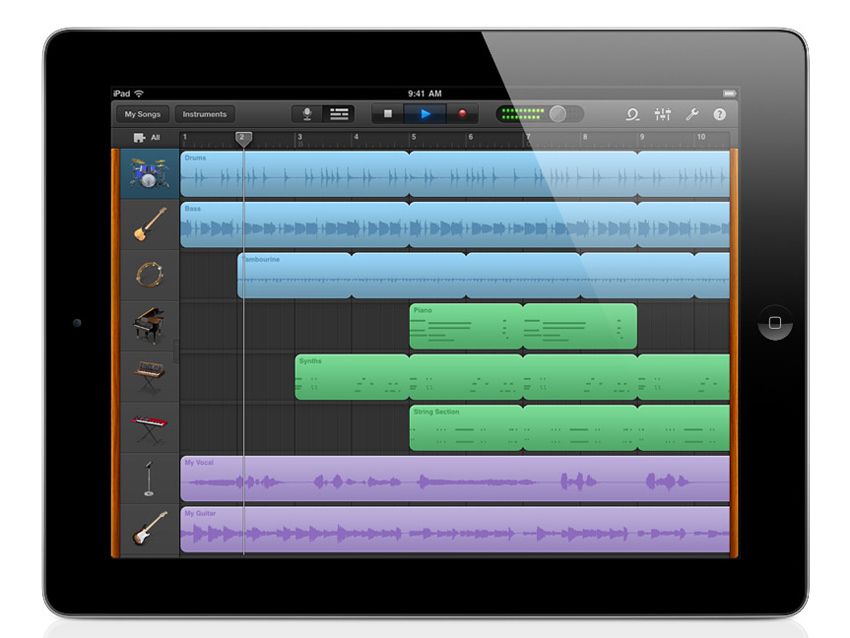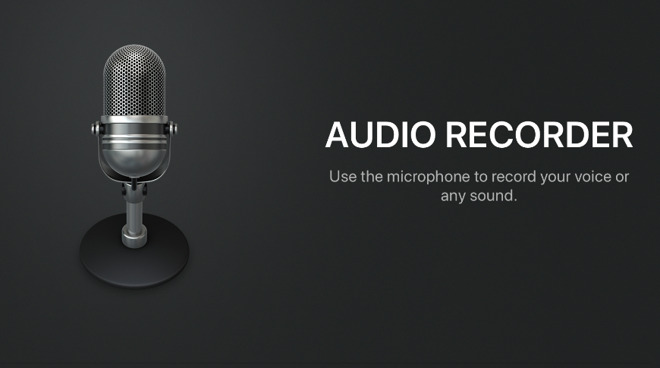Whether you have a 64 GB iPhone or a 512 GB iPhone, running out of storage sucks. It means you can't take the photo or video you want to take, download the app or game you want to download or do anything that adds any significant amount of data at all. The solution is twofold: enable storage-saving features and delete anything you no longer need. Here's how!
What's taking up all your storage space?

Jun 02, 2016 Where in this diagram does it show an amp between the guitar and the IPad? I wouldn't consider the low signal an issue if it didn't then lead to very poor audio quality in the mix, as it requires all tracks to be brought way down as a result (the drum loops for example are very strong). Input level into Garageband too low, Pod app fine. With GarageBand for iPad, Apple is sending a different message: Yes, GarageBand is a tool for making music, but anyone—from musicians to tin-eared newbies—can use it. No talent required.
Ipad Volume Problems
64 GB isn't a lot anymore but even 512 GB might not be enough, depending on how you use your iPhone. Here's some of what takes up your storage space:
-
Operating system: The first big bite out of your of iPhone storage is iOS itself. Apple has made iOS smaller and more storage efficient over the years, but it still takes up to 5 GB of space right off the top.
-
Photos & videos: Recent iPhones have 12-megapixel, 4K video cameras on the back. That can lead to camera rolls and photo albums in the double or triple GB digits.
-
Movies, TV, and music: iTunes movies can be 1-3GB in size for SD depending on the length. If you prefer watching HD, they can be 3-6GB. iTunes TV shows can be a quarter to half the size of movies, but more than make up for it by the number of episodes typically available. Music files are much smaller, but most people have a lot more songs, which more than makes up for it.
-
Apps and games How to logout of spotify on djay pro. : Apps and especially games can also take up a lot of space on your iPhone. It's not uncommon for some console-quality games to be over 2 GB in size days. Podcast apps, especially if you download a lot of shows, can also grow to 10 GB or more.
-
Omnisphere 2.6 keygen. Attachments: If you get a lot of files attached to your email, or receive a lot of Messages with media attachments — looking at you, animated GIFs! — it takes up a lot of space. A lot a lot.
-
Files: If you work in GarageBand, iMovie, or otherwise edit a lot of content, those projects can take up considerable space as well.
Here's how to get specifics:
- Launch Settings
- Tap on General.
- Tap on iPhone (or iPad) storage.
It can take a while for the list to popular, especially your Photo Library but, after a few seconds, you'll see exactly where all your storage has gone.
Pro tip: If you tap on some apps, you can offload their data, which will free up storage, but keep the documents and data right from the device storage section of the Settings app. You can also delete them if you're sure you don't want them on your device any longer.
So, what can be done?
How can you reclaim your the storage space on your iPhone or iPad?
The bad news is you can't reduce the amount of space taken up by iOS. The good news is, you can reduce almost everything else. And you have a few options:
-
Optimize: Apple has implemented a 'nearline' approach where it automagically stores recent files locally but moves older files to iCloud. Both iCloud Photo Library and iCloud Music Library do this for media. On-Demand Resources will leave later game levels on the App Store and only download them when you get close to them. With iTunes in the cloud, you can even delete local copies of iTunes movies and TV shows, and iBooks, and apps, and re-download them at any time — even stream video while downloading it if time is short and bandwidth plentiful.
-
Delete: If you typically take 10 photos or videos to get 1 that you like, deleting those failed attempts can save you considerable space. If you don't want to risk deleting anything you think you might want in the future, you can connect your iPhone to your Mac or Windows PC, copy over any photos, videos, movies, TV shows, and music, apps, and then delete them from your iPhone. That way, if you ever have regrets, you can go back and reclaim them.
-
Upload: Beyond Apple's services, there are several prominent online providers like Dropbox, Google, and Microsoft that let you work and store content in the Cloud. Same goes for streaming services like Netflix and Spotify, which have some offline options but mainly let you stream whenever or wherever you want.
Off-loading content
Apple has made it very easy to view content that takes up the most storage on your device and makes it easy for you to free up space by getting rid of content you don't need. We've got a full guide for how to free up storage space.

Cloud concerns
Online is convenient and can be used anywhere, but if you don't have a lot of data or a solid connection, it can be expensive or frustrating to get what you want, when you want it. If you never leave a Wi-Fi hotspot, and the services you want are in your area, you could get by. Dropbox, Google+, Flickr, Spotify, Songza, iTunes Radio, Netflix, Amazon, and other services cover both your stuff and catalog stuff, giving you way more from the cloud than you ever could fit on a single phone.
How are you managing your iPhone storage?
A mixture of all the above approaches is not only possible but ideal. You can copy off or delete away bigger stuff you don't use often, like old photos and videos, and movies and TV Shows you've bought but already seen. You can store or stream smaller stuff, and things you don't need all the time, but do need to be able to access at any time.

I'm all in on iCloud Photo Library, iCloud Music Library, iCloud Drive, and Dropbox. I set them and then let them do their thing. If you have a different approach, though, I'd love to hear about it. Let me know what works for you!
iPhone 11
Garageband Ipad Volume Too Low Lyrics
Main
🍎 ❤️
Apple reminds us all that 'creativity goes on' in new YouTube video
Garageband Ipad Tutorial
Apple's latest YouTube video knows just how to tug at the heartstrings.